How To Choose the Best Steak at the Grocery Store, According to Experts
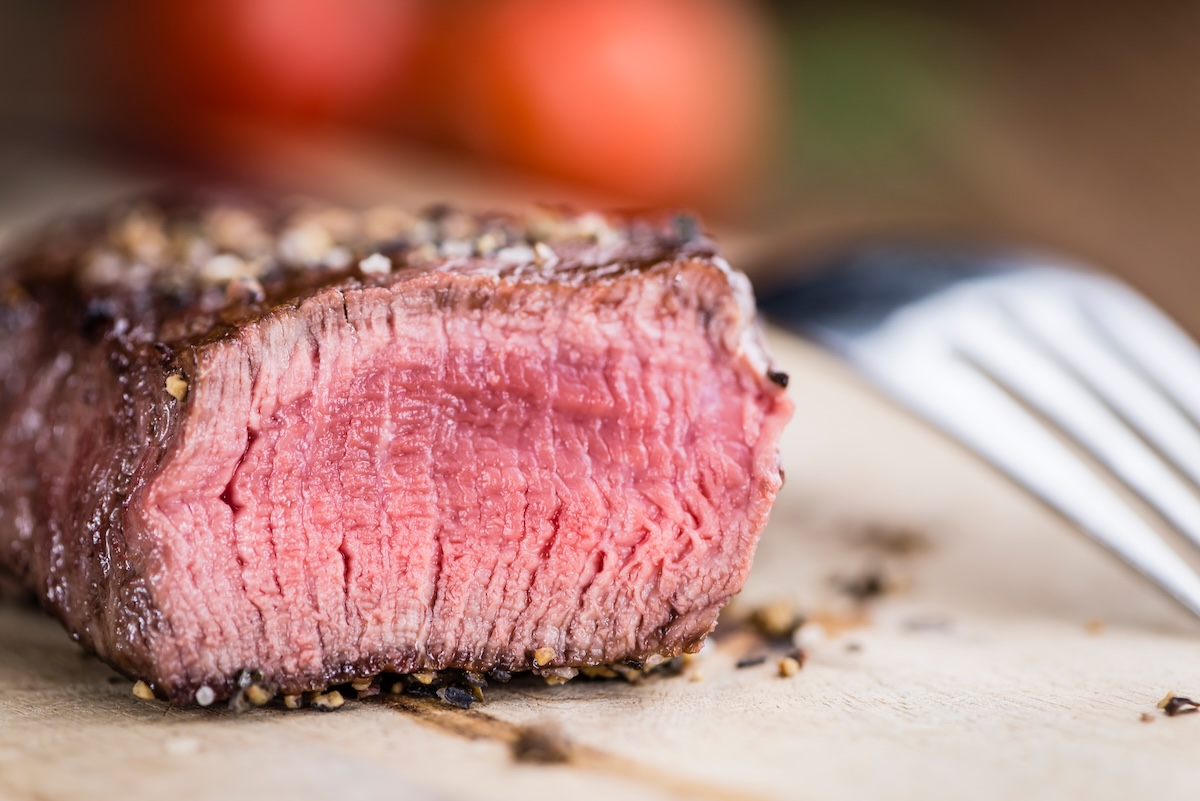
Steak is something you want to enjoy every bite of. It’s an indulgent meal that’s not cheap. But not all cuts are worth leaving the store. Knowing what to look for at the butcher counter can make a big difference in your next dinner. Whether you’re grilling out, cooking for a special occasion, or just craving a juicy piece of steak, picking the right one entails more than grabbing what’s on sale. From marbling to thickness, here are seven tips on how to shop like a pro from steak, according to chefs and meat experts.
Check the Date

It seems obvious, but checking the date is vital, however not for the reasons you might think. “If I am buying imported steak, I look for a recent pack date because it usually already had good wet aging before packaging,” says Jason Kennedy is an in-house meat expert with Verde Farms. “For domestic beef, I often buy closer to the best-before date, knowing that it has had more time to age.”
Marbling

Marbling is fat and fat is flavor, tenderness and juiciness when it comes to steak. So the white specks you see in a cut are fat and it matters.”When you’re choosing a steak for your skillet or grill, remember: look for even marbling, don’t shy away from spending a little extra, and keep it simple,” says Chef Thomas Odermatt, Founder of Roli Roti Food Trucks and Butcher’s Bone Broth.
Look for Too Much Moisture
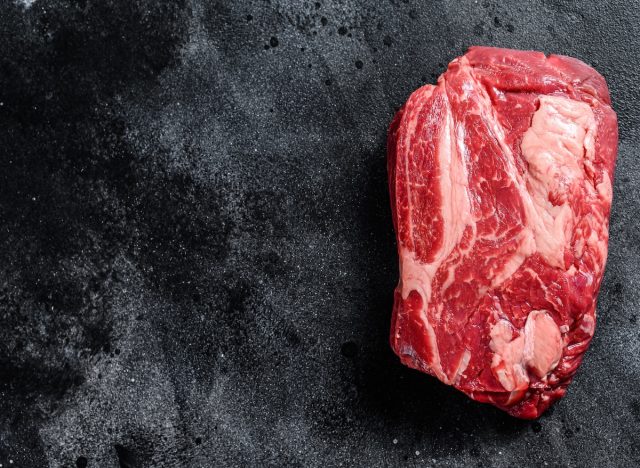
There’s a lot to take note of when shopping for steak and looking for added moisture is a key factor. “I look for them not to be too moist if they are in packaging,” says Chef Joe Nierstedt, the Chef + Co-Owner of Katsubo Chicken + Ramen in Charleston, SC.” Excess moisture will prevent the nice sear when cooking.”
Color
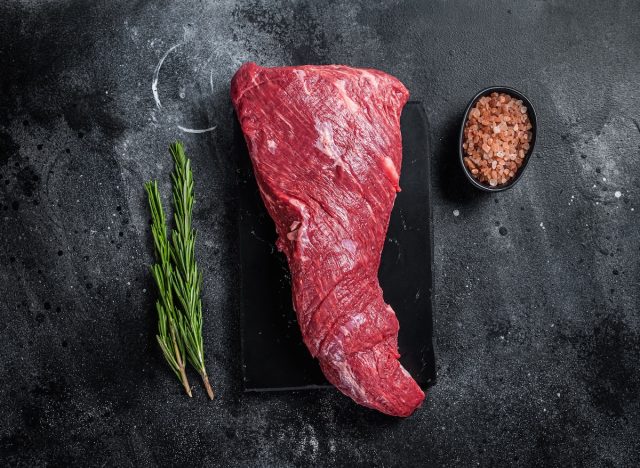
Color is another important aspect of selecting the best cut. “When selecting a steak it is important to select one with a bright, cherry-red color,” says Dennis Turcinovic, owner and managing partner of Delmonico’s Hospitality Group. “Steer clear of cuts that are a deep purplish color as these often result in a tougher, dryer taste.”
Thickness
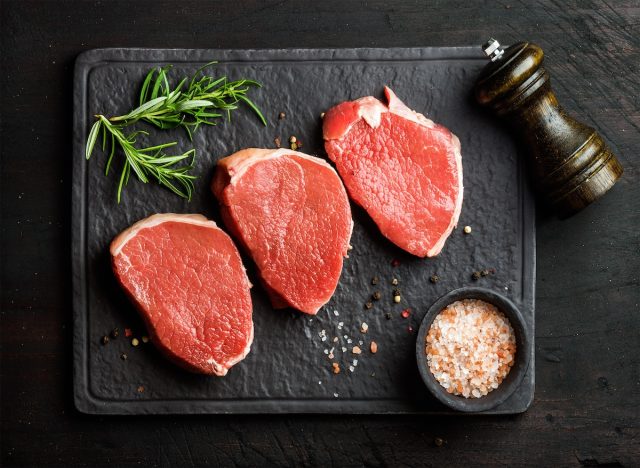
The level of thickness is something to keep in mind before taking steak home, says Turcinovic. “Look for cuts that have uniform thickness. This will ensure even cooking throughout the steak. My rule of thumb is about a one-inch thickness all around.”
Look for Grass-Fed
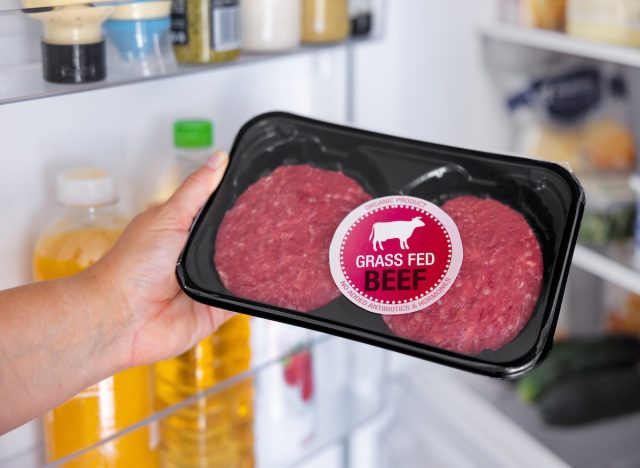
High-quality meat tastes better so look for grass-fed or grass-finished because it “has a deeper flavor and more nutrition than its grain-fed / finished counterparts,” says Jennifer Borchardt, Culinary Director at Pre Brands. “To find this type of steak, skip the meat counter and head to the refrigerated meat section where labels will clearly communicate this.”
Packaging
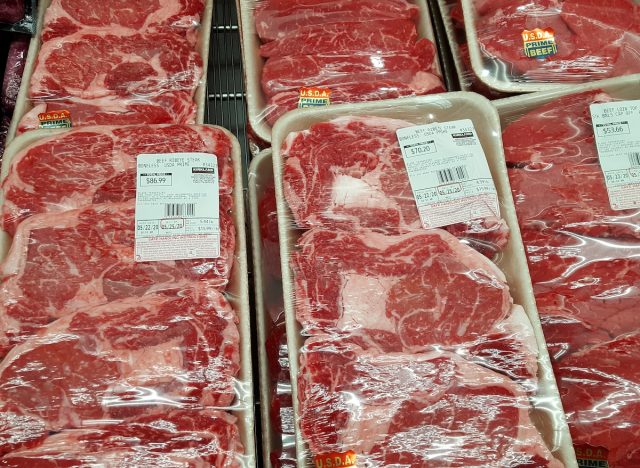
Finally, if everything above checks out, take a good look at the packaging. “The steak’s packaging can say a lot,” explains Turcinovic. “Carefully inspect the wrapping for any rips, holes, or tears to reduce the risk of contamination. Avoid packages with excessive liquid pooling at the bottom as this can indicate the meat is not fresh and may be beginning to spoil.”